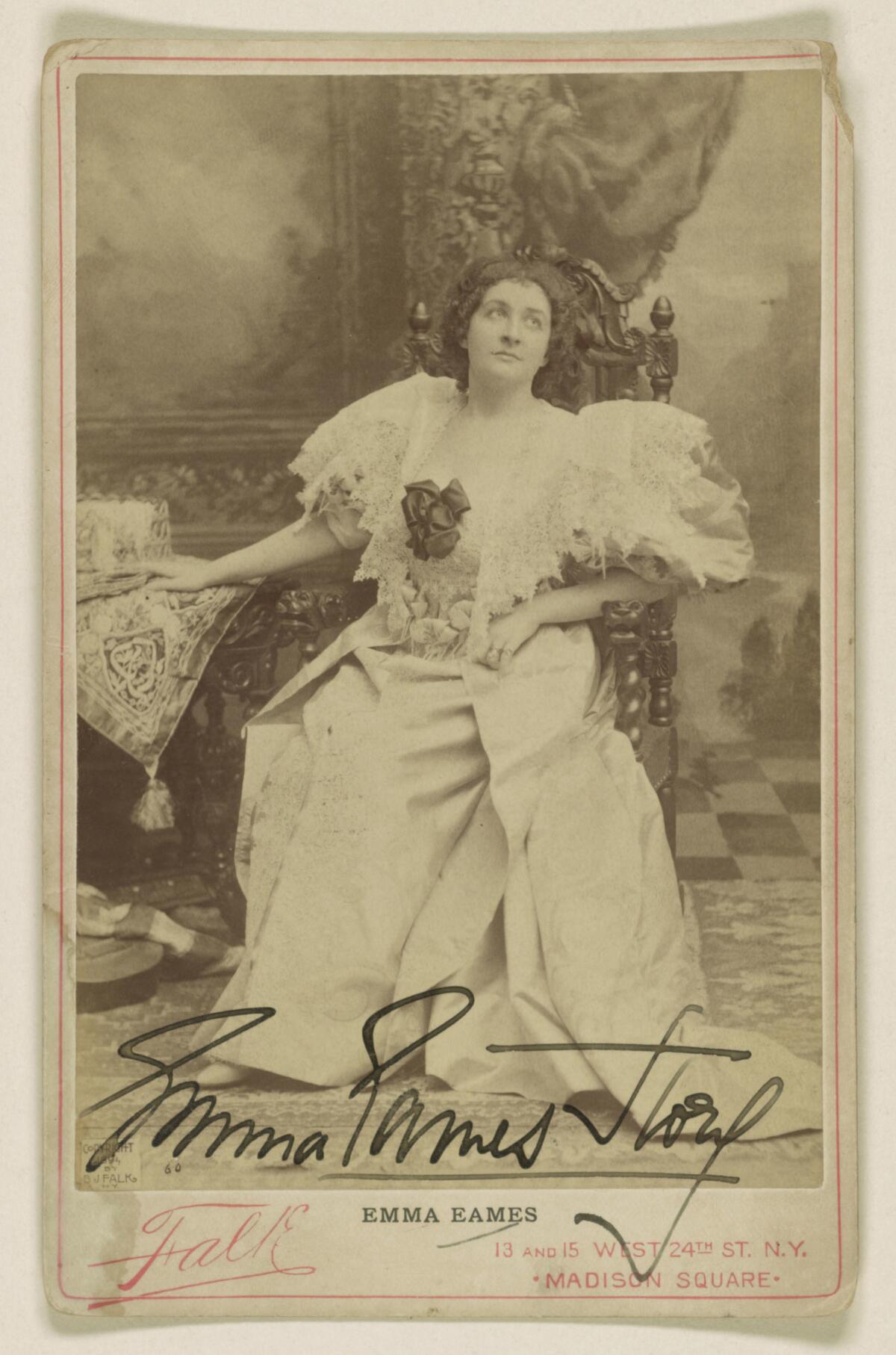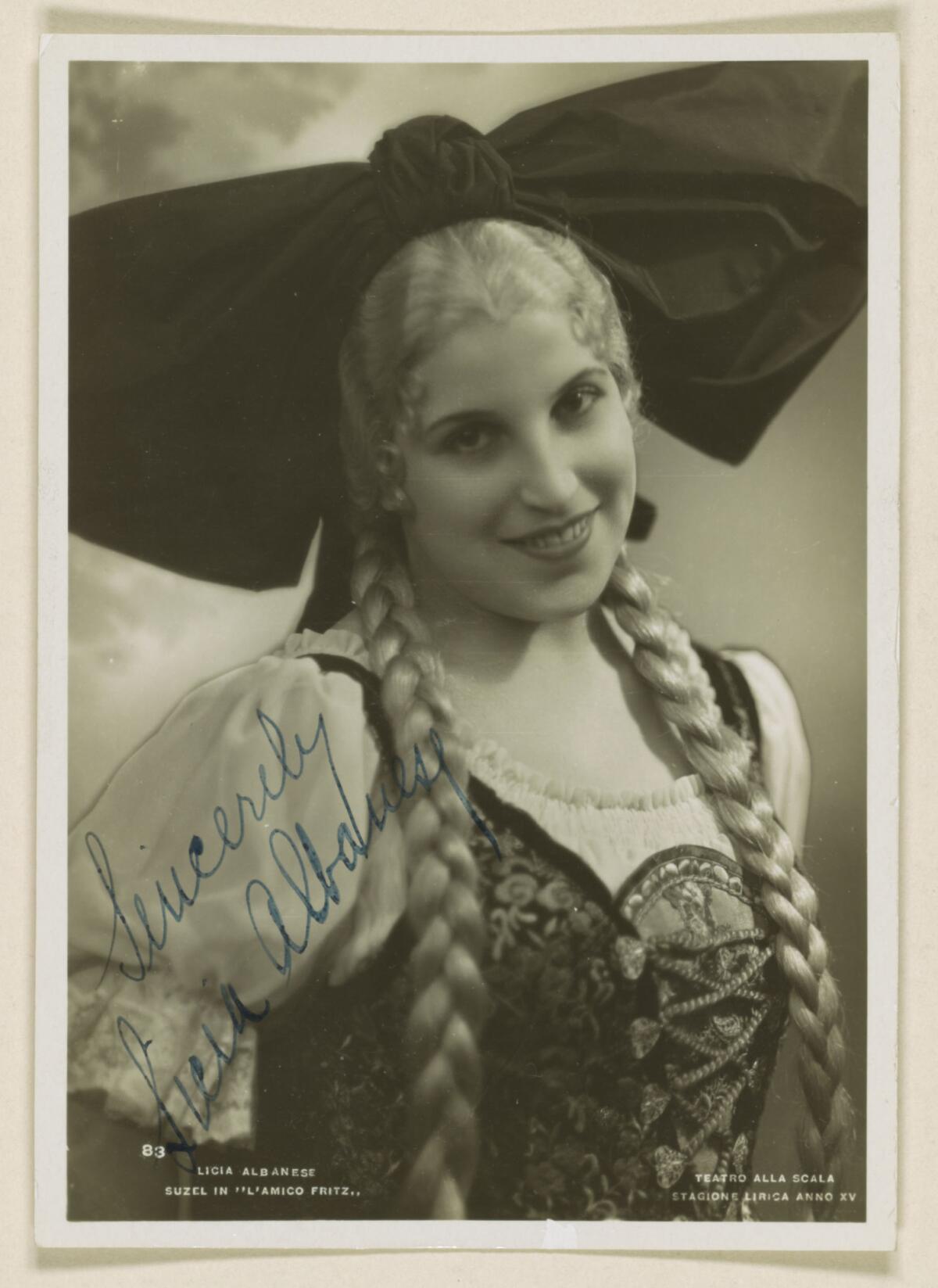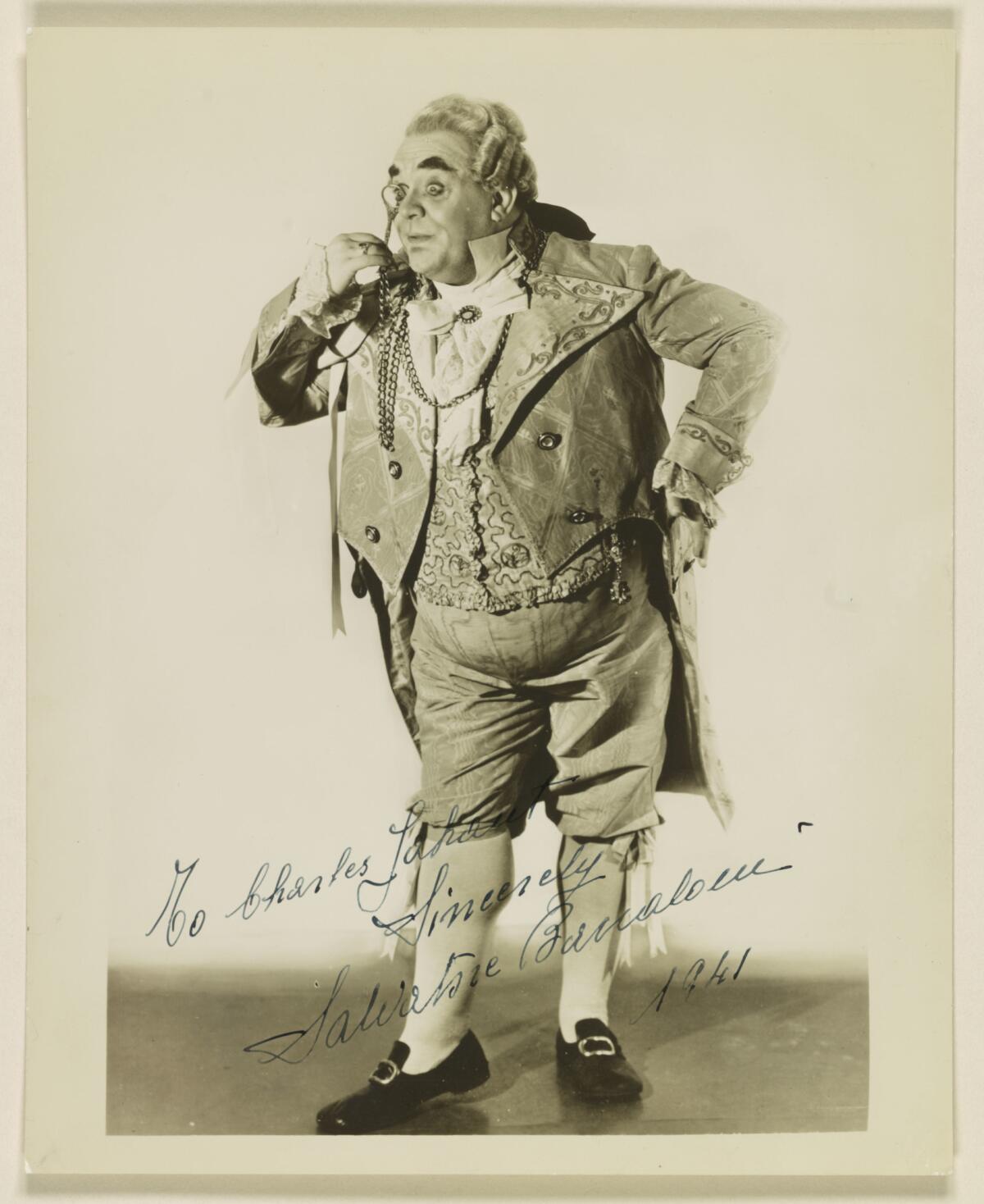When opera singers were media stars (and when Instagram wasn’t a thing)
- Share via
Long before Instagram, how did ardent fans catch a glimpse of their favorite stars?
They wrote a letter requesting a signed photograph or they purchased a print in a gift shop. In the late 19th and early 20th century, opera stars posed for hours in a studio, fully costumed, to please their public.
The exhibit “#Opera Before Instagram: Portraits, 1890-1955,” on display at the Library of Congress Ira Gershwin Gallery inside Walt Disney Concert Hall, showcases 36 photos from the collection of the late opera authority Charles Jahant.
The idea driving the show: Imagine what Jahant’s Instagram account would have looked like if social media existed back in the day.

SIGN UP for the free Essential Arts & Culture newsletter »
“It was a great way to bring new blood to the opera,” said curator Raymond White, senior music specialist at the Library of Congress, who came up with the idea with colleague James Wintle.
Jahant was a well-known critic, lecturer and member of the Advisory Council of the Metropolitan Opera Archives. He began donating his collection of 2,000 photographs of opera singers to the Library of Congress in 1980.
“He was a well-known expert but real chatty in his approach,” White said of Jahant’s text. “Instead of writing a technical, qualitative description of the opera he simply wrote what he thought of the singers, very similar to Instagram.”
Opera singers were media stars in their time, but unlike the celebrity game today they aimed for glamour not scandal. “Being seen in formal finery was how they projected themselves,” White said.

Italian soprano Licia Albanese posed with long, blond braids and an oversize bow atop her head as Suzel in the Pietro Mascagni opera “L’Amico Fritz.” Dressed as Don Pasquale, Italian bass Salvatore Baccaloni portrayed poised perfection.
“It’s hard for people to understand what rock stars opera singers were 100 years ago,” White said.
A video loop of 10 crackly vintage recordings will be played throughout the exhibit, which is free and runs through Aug. 19.

Follow The Times’ arts team @culturemonster.
ALSO
100 missing women: Drawings at African American museum tell a powerful story of loss
The NEA works. Why does Trump want to destroy it?
L.A. Without the NEA: Series looks at what’s lost if agency gets the ax
The biggest entertainment stories
Get our big stories about Hollywood, film, television, music, arts, culture and more right in your inbox as soon as they publish.
You may occasionally receive promotional content from the Los Angeles Times.







